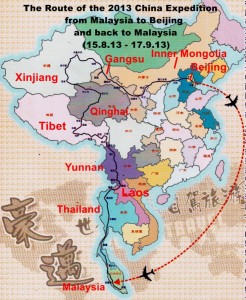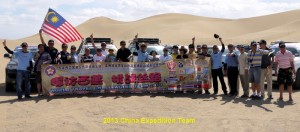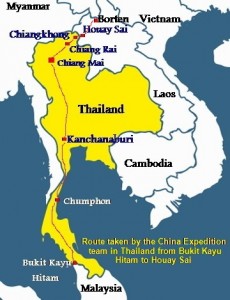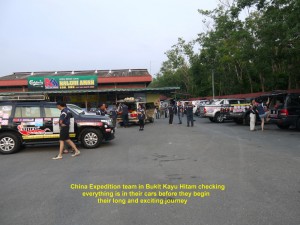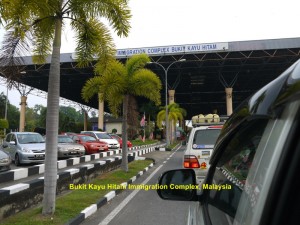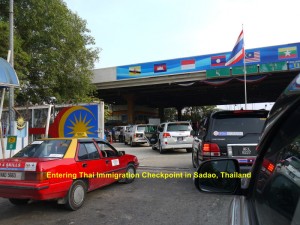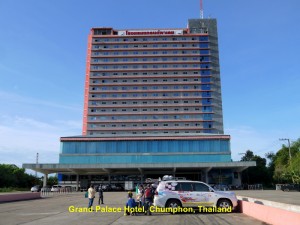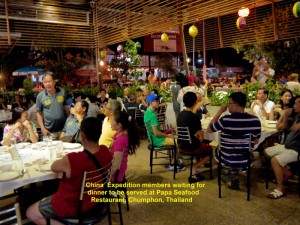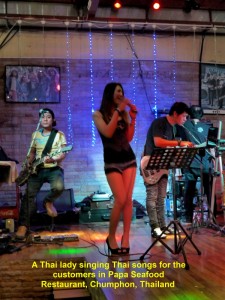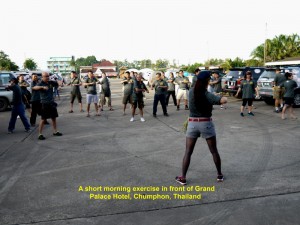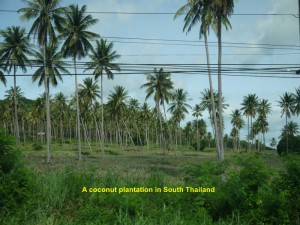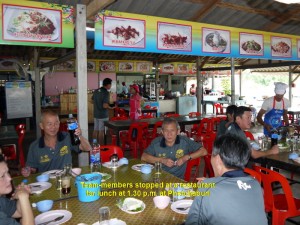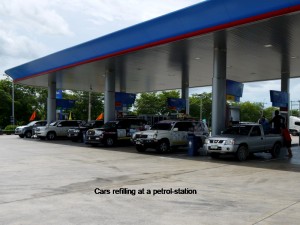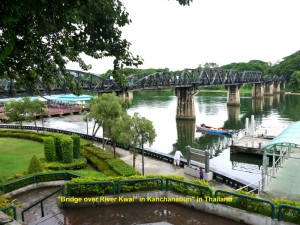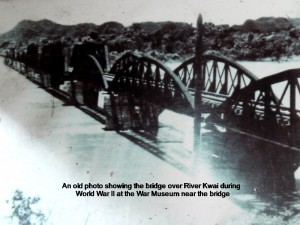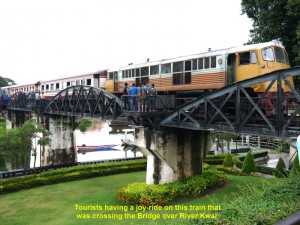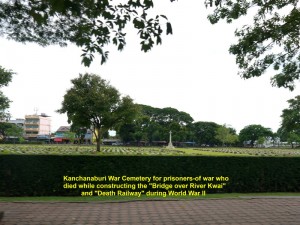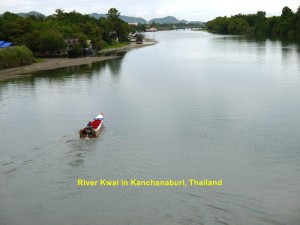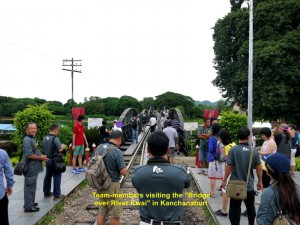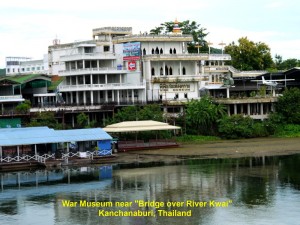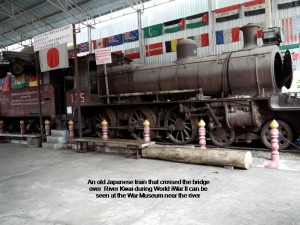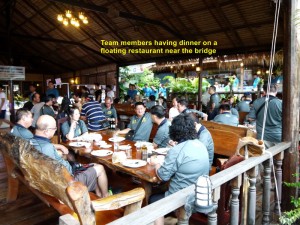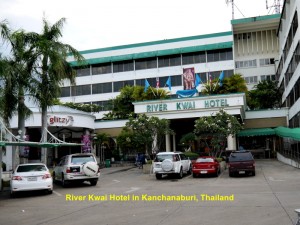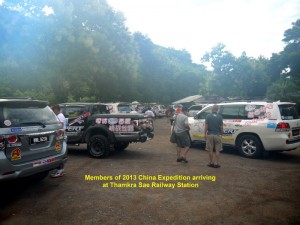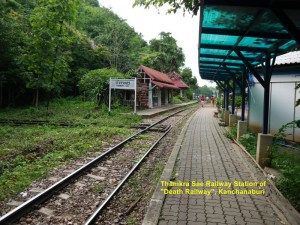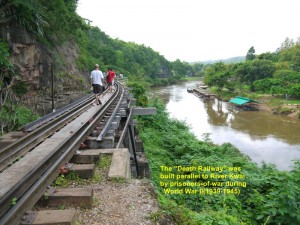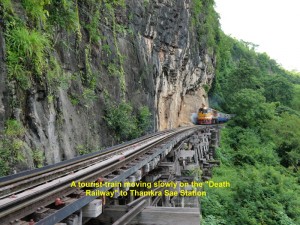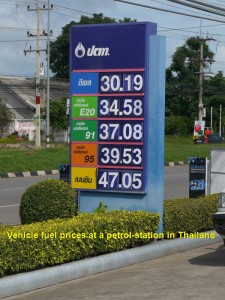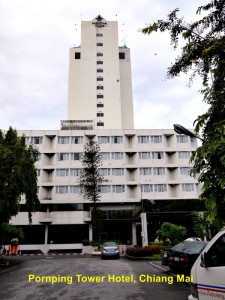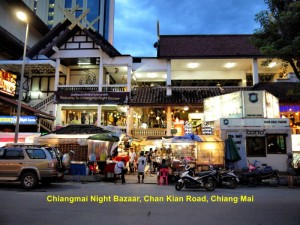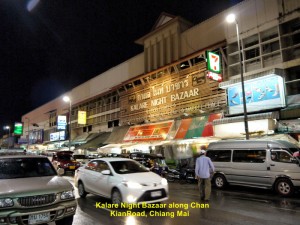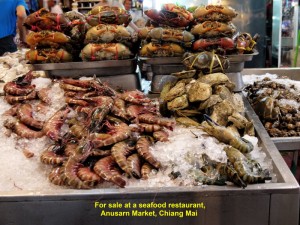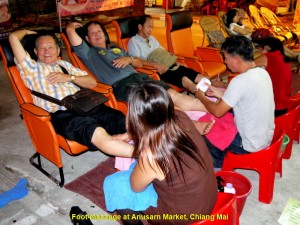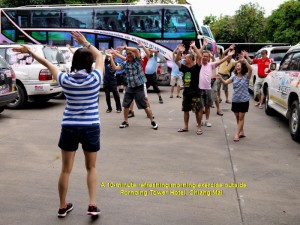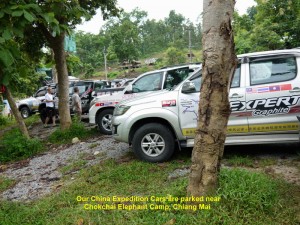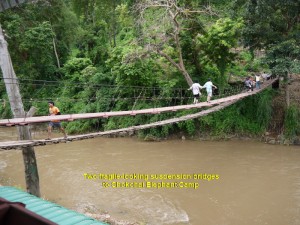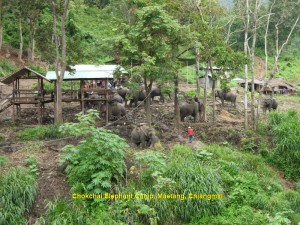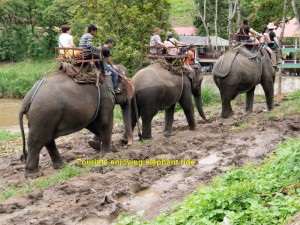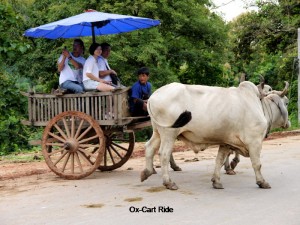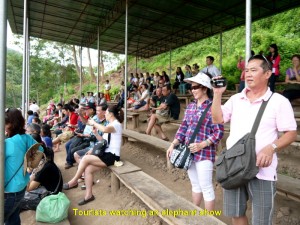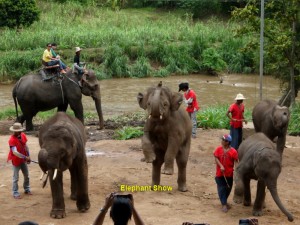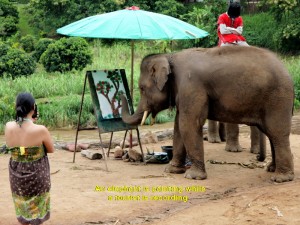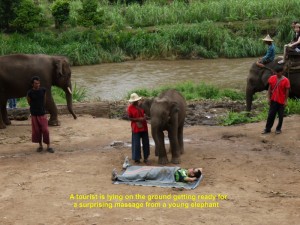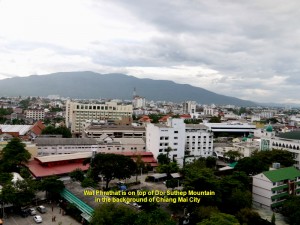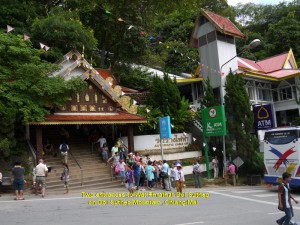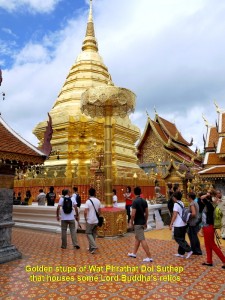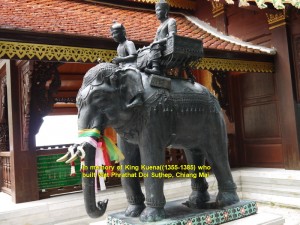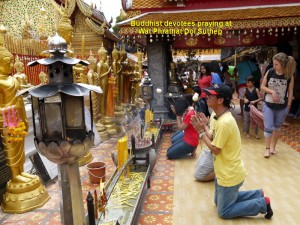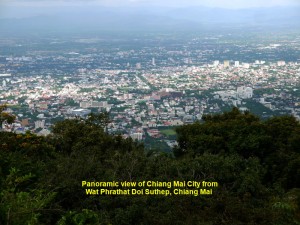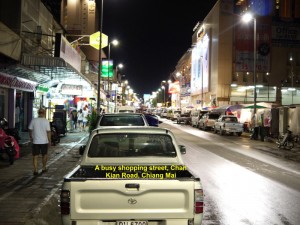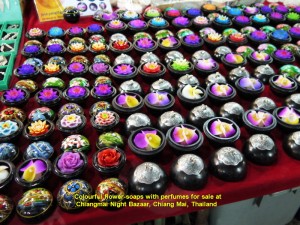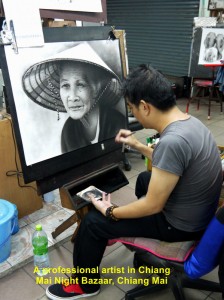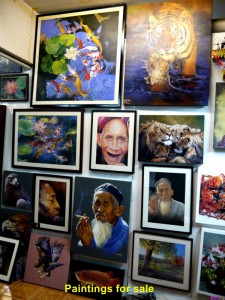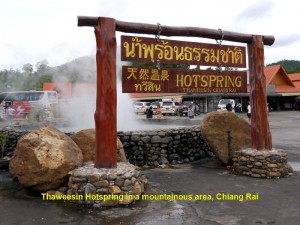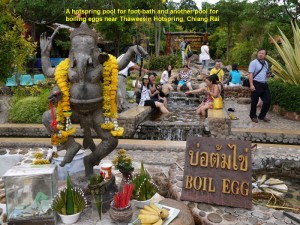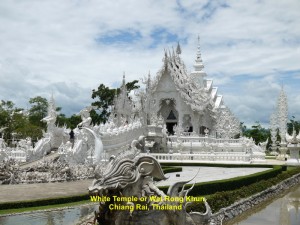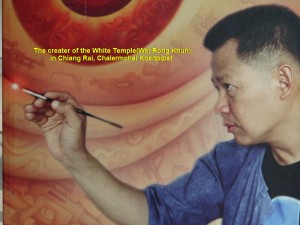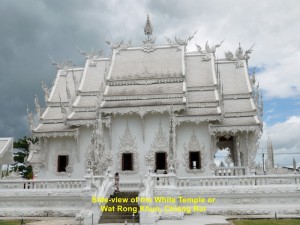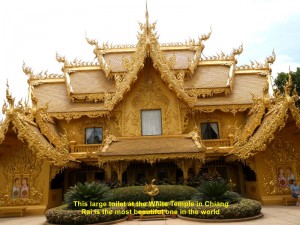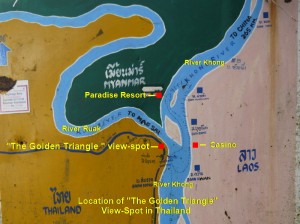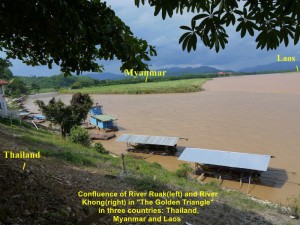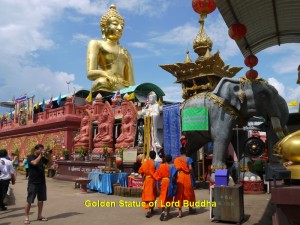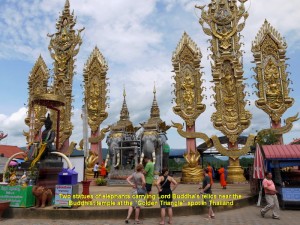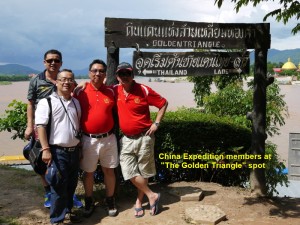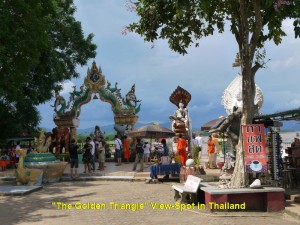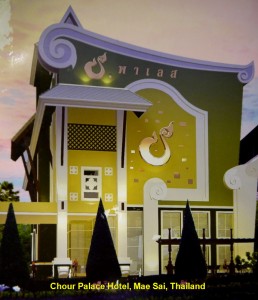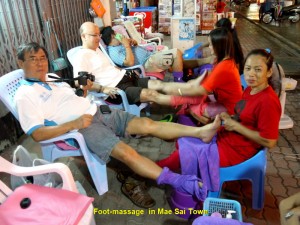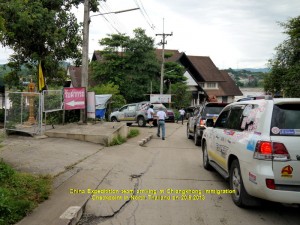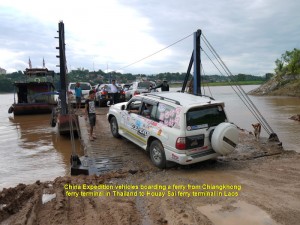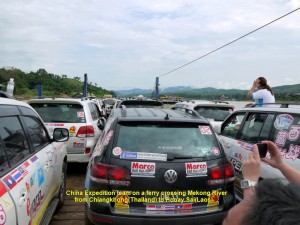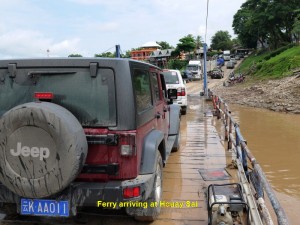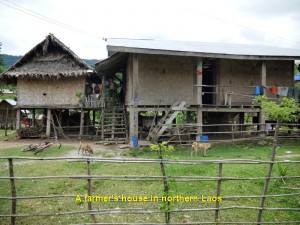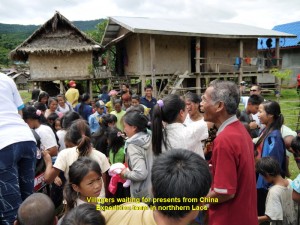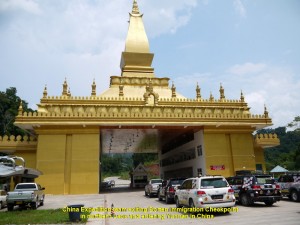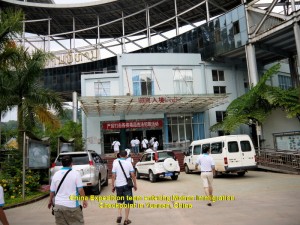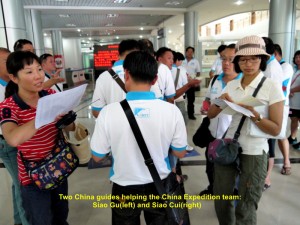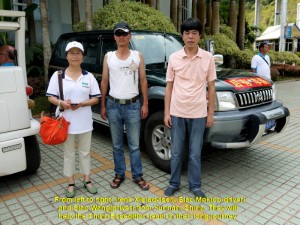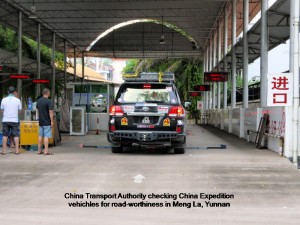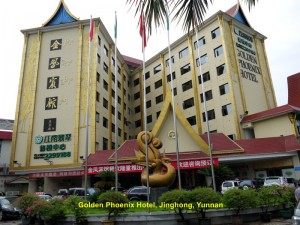Journal of My 2013 China Expedition Part I (Thailand)
Journal of My 2013 China Expedition Part I (Thailand)
(15.8.2013 – 17.9.2013)
In 2013, I joined an interesting, enjoyable and educational overland expedition, China Expedition. It involved a team of 45 Malaysians and Singaporeans, and fifteen 4 wheel-drive cars. It started from Bukit Kayu Hitam, Malaysia, on 15.8.2013, and ended in Beijing, China, on 17.9.2013 via Thailand and Laos. It lasted a total of 33 days.
The map below shows the route taken by the expedition.
As the journal is too long, I have written in a few parts. I hope you will enjoy reading it.
Part I (15.8.2013 – 20.8.2013)
Thailand-Laos Journey
Day 1 (15.8.2013, Thursday)
Bukit Kayu Hitam(Malaysia) – Chumphon(Thailand)
(570km)
In the morning of the first day of our expedition, all the members and cars gathered at the Bukit Kayu Hitam immigration checkpoint. With all the necessary documents ready, we went through the Malaysian and Thailand Danok immigration check-points, smoothly.
At 9 a.m., our long expedition began. We travelled north for about 8 hours to reach a coastal town, Chumphon, in the evening. On arrival, we checked in at a large hotel, Grand Palace Hotel.
Later, we went to have dinner together at a restaurant, Papa Seafood Restaurant, in town. While having dinner, we were entertained with Thai songs by some local singers. After dinner, we strolled along a busy street lined with stalls selling fruits and snacks. Then we went back to our hotel to rest.
Day 2 (16.8.2013, Friday)
Chumphon – Kanchanaburi(Thailand)
(486km)
After a short morning exercise outside the hotel, we left Chumphon at 8.30 a.m. for Kanchanaburi. We went through villages and towns, and passed paddy fields, rubber and coconut plantations. We stopped at a restaurant at Phetchabri for lunch and two petrol-stations to refill our cars.
Having travelled for 9 long hours, we, finally, reached Kanchanaburi town, and went straight to the infamous bridge nearby. It is known as “Bridge over River Kwai”.
During World War II(1939-1945), Japanese invaders forced 240 000 prisoners of war from South-east Asia to build a 418 km-railway and bridges from Bangkok to Rangoon(Yangon) in Burma(now Myanmar). Their purpose was to expand their colony in South-east Asia and India. After the war, it was not used anymore. Now the railway is known as “Death Railway” as it was constructed at a cost of over 100 000 lives and the bridge built across River Kwai is known as “Bridge over River Kwai”.
Many of those prisoners-of-war who died while building the railway and bridges were buried in war cemeteries in Thailand and Burma. There is one that has about 7 000 graves in Kanchanaburi town.
We spent an hour crossing the steel-bridge and visiting a museum nearby. The museum shows exhibits about the construction of the “Bridge of River Kwai” and the “Death Railway” during World War II.
“Bridge over River Kwai” and a short stretch of the “Death Railway” near the bridge in Kanchanaburi are now popular tourist attractions.
At 7 p.m. we had dinner on a floating restaurant next to the bridge. After dinner, we went back to Kanchanaburi town where we checked in at a hotel, River Kwai Hotel, at 8.30 p.m.
Day 3 (17.8.2013, Saturday)
Kanchanaburi – Chiang Mai(Thailand)
(700km)
At 8 a.m., we left the hotel and travelled north for a few minutes to the spot where we could see a short stretch of the “Death Railway”.
On arrival at the spot, we walked a short distance to a small railway station, Thamkra Sae Railway Station, and along the railway track. As we were walking along the track, we could imagine the undernourished prisoners-of-war busy building it under the watchful eyes of the Japanese soldiers. Then we look around us and noticed that it was built close to a cliff on the left and running parallel to River Kwai.
A few minutes later, a train carrying tourists for sightseeing, came and moved slowly on the track. The tourists on the train waved to us as it passed by and we waved back. An hour later, we left the “Death Railway” with feelings of sadness for the poor souls who were forced to build it without proper food and health care during the cruel war.
Next, we travelled north to Chiang Mai the whole day for 5 hours. At 1.30 p.m. we stopped at a town, Nakhom Sawan, for lunch. Besides, we stopped at two petrol stations for the cars to be refilled.
At 7.30 p.m. we arrived at Chiang Mai town where we checked in at Pornping Tower Hotel. After dinner at a food-court in Anusarn Market near the hotel, we took a stroll along a busy shopping street. We visited two large shopping bazaars, Chiangmai Night Bazaar and Kalare Bazaar along the same road, Chan Kian Road.
There was a place near these bazaars, Anusarn Market, where there were seafood restaurants, stalls selling clothings, footwear, handicrafts, etc, and open-air foot-massage service.
At 10 p.m. I went back to my hotel room and retired after a long day.
Day 4 (18.8.2013, Sunday)
Chiang Mai(Thailand)
After a 10-minute morning exercise outside Pornpimg Tower Hotel in Chiang Mai, we travelled for half an hour to an elephant camp, Chokchai Elephant Camp, to watch a 40-minute show performed by a few intelligent elephants. When we reached the camp we crossed two fragile-looking suspension bridges over a small river to the place where an elephant-show would be performed.
In the olden days in Thailand, elephants were used to pull logs in jungles. When logging activities were stopped in Thailand, they were trained to do different kinds of job. They were trained to perform shows, give short joy-rides, trek in countrysides, etc. for tourists. They are now located at a few camps in Chiang Mai area. Tourists visit these camps to enjoy the interesting activities provided by the animals.
While waiting for the show to start, I looked around and saw tourists feeding a few young elephants, riding elephants and sitting on long bamboo-rafts floating down the river. Then the elephant-show began.
In the show, the elephants performed a few tricks. But there was one by a cheeky elephant that was hilarious. It purposely massaged the wrong part of a gentleman’s body lying down. The finale of the show was painting a plant with red flowers by an artistic elephant, and one of our expedition members bought it the moment it was done.
After watching the fascinating elephant show, we went back to Chiang Mai City for lunch, and later we went up the highest mountain, Doi Suthep, in Chiang Mai, where a famous Siamese temple is located on its summit. It is known as Wat Phrathat Doi Suthep.
There are over 300 temples in Chiang Mai. They play an important role in the Thais’ religious, cultural and social life. Among the temples in Chiang Mai, Wat Phrathat Doi Suthep is the largest and most famous sitting on top of Doi Suthep Mountain(1066m). The temple was built by the 6th. Thai King, King Kuena(1355-1385), to house some Buddha relics in a large beautiful golden stupa which is 10 metres high.
The temple is now a popular tourist attraction. Tourists may walk up a stairway of over 300 steps or take a cable-car to the top of the mountain to see the beautiful golden shrine. We went up the mountain to see the temple and from the summit, we could see a superb panoramic view of the city and its airport.
In the evening, we visited Chiang Mai Night Bazaar and Kalare Night Bazaar along Chan Kian Road in the city again hoping to buy something that we wanted.
In Chiang Mai Night Bazaar, I was quite fascinated by paintings which looked like photos and they were for sale. I admired the Thai artists who drew them.
Later, we returned to our hotel and prepared for the journey of the following day.
Day 5 (19.8.2013, Monday)
Chiang Mai – Mae Sai(Thailand)
(251km)
At 9.10 in the morning, we left Chiang Mai for Chiang Rai. On the way, we stopped at a place near Chiang Rai to see a hot spring. It is known as Thaweesin Hot Spring. Nearby, there is a hot spring pool for foot-bath and another one for boiling eggs. After spending 30 minutes in the hot spring area, we continued our journey to Chiang Rai.
Arriving at Chiang Rai, we went straight to a unique and only white Siamese Buddhist temple in Thailand. It is known as White Temple or Wat Rong Khun.
The creator of this unique temple was a 58 year-old artist and painter, Ajarn Chalermchai Kositpipat. He, with the help of over 60 of his art disciples, started building it in 1997 and was still continuing building it to show the world the beauty of modern Buddhist arts, and the importance of peace and harmony among all the nations, regardless of colours and creeds. Besides, he built the most beautiful toilet in the world near the White Temple, but it is golden in colour.
At 3.40 p.m. we left the temple and travelled to a well-known place, “The Golden Triangle” where two rivers, River Khong and River Ruak meet to form a confluence.
The Golden Triangle is an interesting place to visit as it was once a notorious place for growing opium poppies. The plants were grown, extensively, in the northern parts of Thailand, Laos and Myanmar, and eastern part of Myanmar. Later, the governments of these countries banned the poppy-cultivation as the drug was detrimental to their people’s health and economies, indirectly.
On arrival at “The Golden Triangle”, we saw an open-air temple with a large golden statue of Lord Buddha sitting cross-legged on top of a high concrete platform. Standing on a spot on the Thai side at the confluence of River Ruak and River Khong, we could see Laos on the right-hand side of the latter river and Myanmar in between the two rivers. Besides, we could see a casino in Laos that was right across River Khong.
Having spent an hour at the place, we went to a Thai border town, Mae Sai. where we checked in at a hotel, Chour Palace Hotel. After dinner at 7 p.m., we took a stroll along the main street in Mae Sai and then had a simple foot-massage given by local ladies on a five-foot way.
After the massage, we went back to our hotel.
Day 6 (20.8.2013, Tuesday)
Mae Sai – Chiang Khong(Thailand) – Houay Sai(Laos) – Mohan(Yunnan) – Jinghong(Yunnan)
(Total 230km)
Today, we had to rush to China via Laos before the China transport authority in Meng La in Yunnan closed its office for checking foreign vehicles entering China for road-worthiness.
At 7.30 a.m. sharp, we left Mae Sai and travelled north to a Thai ferry-terminal in Chiang Khong.
On arrival at the terminal, we went through the immigration and custom checkpoints. Later we boarded a ferry and crossed the dirty-looking Mekong River. Soon we arrived at the Houay Sai ferry terminal in Laos. It did not take long for our immigration and custom clearance in Houay Sai.
At 11 a.m. after lunch, we left Houay Sai and continued our journey to the north to Borten immigration checkpoint on the Laotian side. In Laos drivers have to drive on the right hand-side of the roads. But most of our drivers on this expedition have driven in Laos before.
On the way from Houay Sai to Borten, we travelled through hilly areas where poor Laotian villagers lived. We stopped at one of the villages for a short while and give away some presents which were mostly daily necessities to the happy dwellers.
Then we moved on and soon we arrived at the Laotian northern immigration checkpoint. At 3.30 p.m., we left the checkpoint and entered a Yunnan immigration checkpoint at Mohan in China.
Once out of that checkpoint, we were greeted by a tour-adviser(Irene Xie), two tour-guides(Siao Gu and Siao Cui) and two drivers(Siao Mok and Siao Wang), all from Yunnan, China. They would help and lead us in our long expedition in China which they knew so well.
Then we left the checkpoint and went to a nearby place, Meng La, where all our cars were tested for road-worthiness.
Fortunately, all the cars passed the test.
At Meng La we had dinner. At 7 p.m. we left for Jinghong City which was 170 km away. The road to the city was good but winding and going up and round mountains. Besides, we were travelling at night. Two hours later, we finally reached the city feeling very tired. We checked in at Golden Phoenix Hotel and retired, immediately, as we had another long journey the following day.
Journal of My 2013 China Expedition:
Written by Choo Chaw, Kluang, Johor, Malaysia

